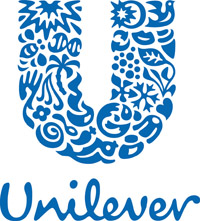Unilever Builds a Solid Foundation for PLM
 It is estimated that 150 million times a day someone, somewhere in the world, chooses a Unilever product. The company's brand portfolio spans 14 categories of home, personal care and food products and includes world favorites such as Lipton, Knorr, Dove and Omo. Unilever products are sold in the Americas, Europe and Asia/Africa in roughly equal distribution.
It is estimated that 150 million times a day someone, somewhere in the world, chooses a Unilever product. The company's brand portfolio spans 14 categories of home, personal care and food products and includes world favorites such as Lipton, Knorr, Dove and Omo. Unilever products are sold in the Americas, Europe and Asia/Africa in roughly equal distribution.Innovation is critical to sustaining Unilever's growth. "We see product innovation as one of the key drivers of top-line growth," says Huw Evans, R&D director of information in Unilever's Home and Personal Care Division.
Unilever defines product innovation this way:
"Product innovation means providing the consumer with a product that delivers a perceivable benefit that is differentiated from those of our competitors and that differentiation drives the choice to purchase and use that product," explains Evans.
He continues, "You can change products to improve their price differentials, for example, but if the consumer is not really experiencing a difference, then we wouldn't classify that as innovation.
"Innovation is about consumer-perceptible benefits that drive choice. To help achieve this, Unilever invests 1 billion euros every year in research and development, which includes support for five major laboratories around the world that explore new thinking and techniques to help develop our products."
Innovation Best Practices
For the past 10 years, Unilever has partnered with Siemens to create a global specification management system that serves as the first major component of its product lifecycle management (PLM) system supporting its product innovation process.
"A company such as Unilever, with a global organization and a complex product portfolio, would not be successful without some independent technologies to support it," Evans says. "PLM will provide the framework for information management in our product innovation process, supporting the common process, the common structure and the common language that we must have if we are going to create innovative products that address unmet consumers' needs and are deployed quickly to market."
Establishing a partnership with a PLM supplier has been an important innovation best practice, according to Evans, because it supports many other innovation strategies.
Specification Management
Specification management has been helpful to Unilever as it strives to innovate in the face of rising raw material costs. Using SIMATIC IT Interspec specification management functionality from Siemens, Unilever has achieved global visibility for all raw material specifications, allowing an order of magnitude reduction in the number of specifications in the organization.
Purchasing fewer materials in greater quantities gets the company better deals with suppliers. But Evans also sees a strong, and equally powerful, connection to innovation.
"We can invest the money we're saving back into driving value for innovation," he explains. "If you think about it, it takes a certain amount of R&D time to develop and manage and maintain any individual specification. If you're reducing that by an order of magnitude, clearly there's R&D time that can be reinvested elsewhere."
Knowledge ReUse
Another innovation best practice that would be impossible without PLM is knowledge reuse. This is important to Unilever's strategy of driving top-line growth through innovation because, as Evans explains, "We cannot afford to invent a completely new product every time we need to innovate. The reuse of componentry in new and creative ways is as important as the inventive step itself."
Teamcenter digital lifecycle management software from Siemens facilitates knowledge re-use by providing a single source of product information for the entire global organization -- something Unilever is currently putting into place to support its deployment of CAD for its packaging function. Evans believes knowledge reuse will not only facilitate the innovation process, but it will also support the faster cycle times that the current competitive climate dictates.
Unilever's innovation efforts are not limited to its products. They extend to production design processes and package design as well. PLM software is also being used by Unilever to support these areas. For example, Unilever uses Siemens' NX to design packaging. "Packaging is a very large component of our product. It's certainly the first thing that a consumer sees so it's a big driver of choice," Evans explains. "Getting that right is very important."
PLM at Unilever is not an IT project, according to Evans. He refers to it "as a technology-enabled business change project that evolves with Unilever's business priorities."
In a company such as Unilever, where innovation is always a high priority, PLM is providing a solid foundation for future growth.
